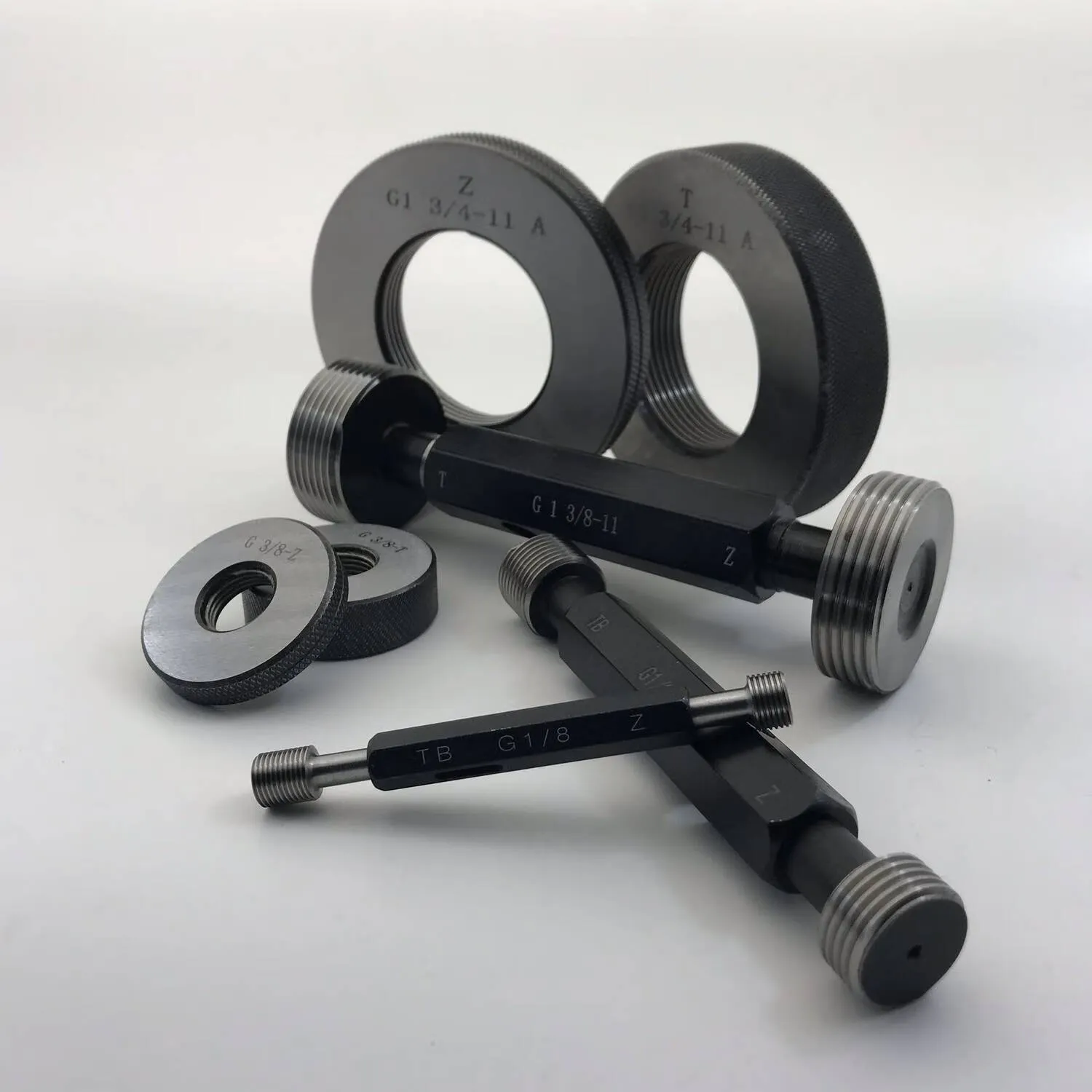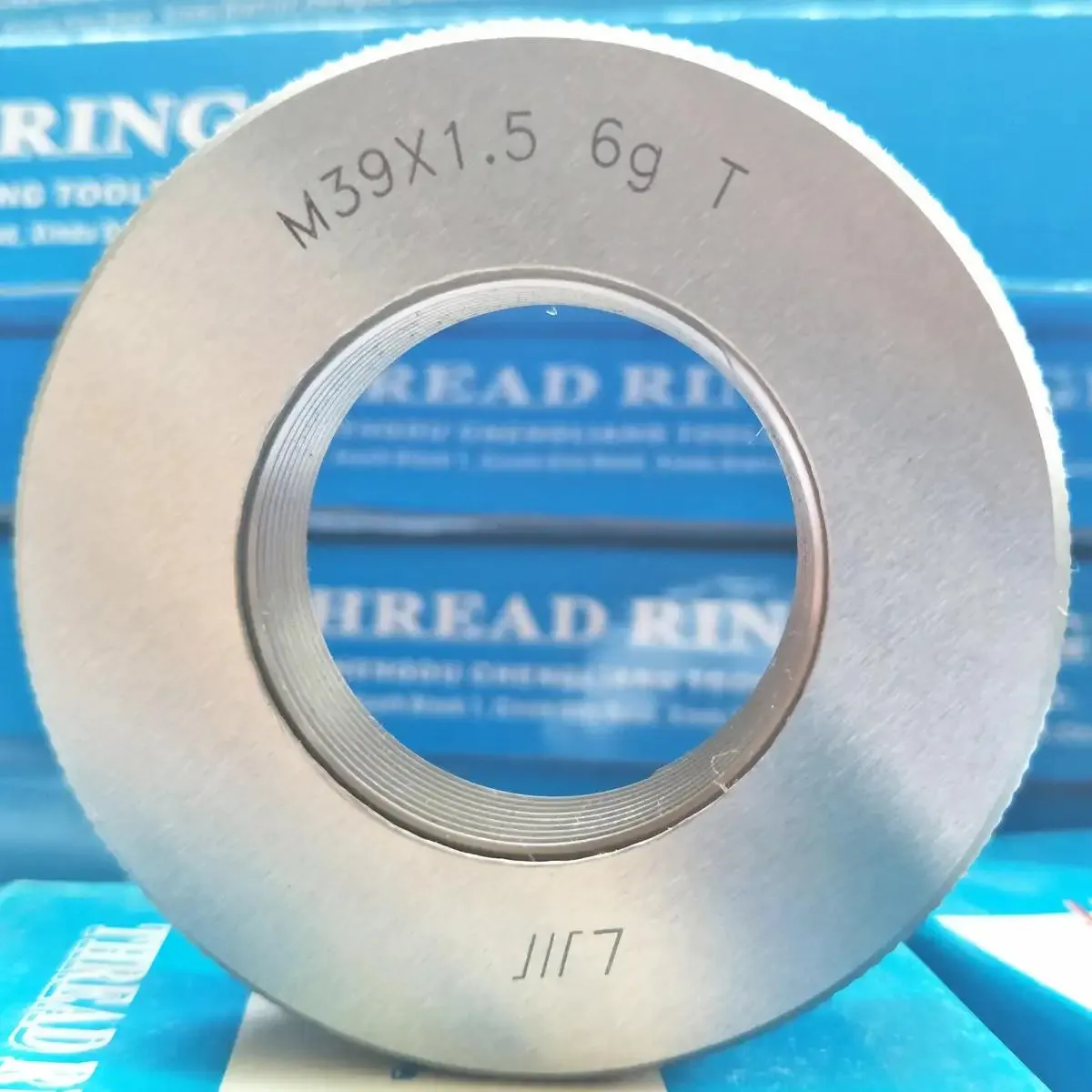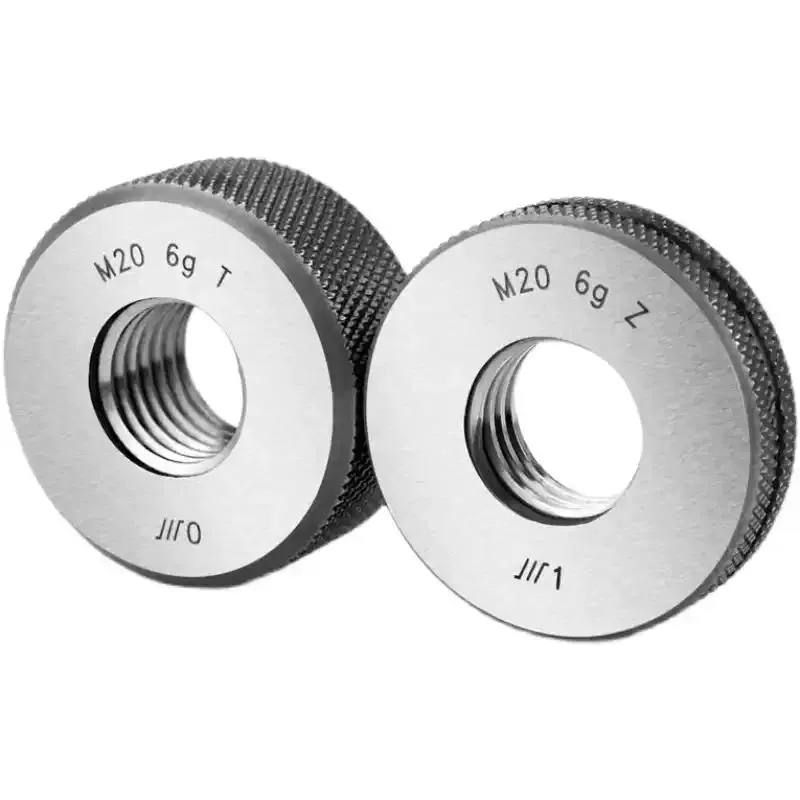حوزەیران . 25, 2025 09:37 Vegere navnîşê
Threaded Ring Gauge Tolerance Grades Explained for Machinists
In precision machining, ensuring the accuracy of threaded components is critical to maintaining product quality and functionality. Threaded ring gauges are indispensable tools for verifying the dimensional correctness of external threads, such as those on bolts, screws, and studs. Understanding tolerance grades—the permissible limits of variation in thread dimensions—is essential for machinists to meet industry standards and deliver reliable parts. This article explores the use of thread gauge tools, the role of threaded ring gauge systems, adherence to thread ring gauge standard specifications, and the advantages of adjustable thread gauge designs. By the end, machinists will gain actionable insights into selecting and applying these tools effectively.

The Essential Use of Thread Gauge in Precision Machining
The use of thread gauge tools is foundational to quality control in manufacturing. These gauges verify that threads conform to specified tolerances, ensuring compatibility with mating components. For external threads, a threaded ring gauge acts as a “go/no-go” device: if the threaded part passes smoothly through the “go” gauge but stops at the “no-go” gauge, the thread is within acceptable limits.
Tolerance grades, defined by standards like ISO (International Organization for Standardization) and ASME (American Society of Mechanical Engineers), dictate how much deviation is permissible. For example, a Grade 6H threaded ring gauge might be used for general-purpose applications, while a tighter Grade 4H could be reserved for high-precision aerospace components. Machinists must match the gauge’s tolerance grade to the part’s intended function to avoid over- or under-engineering.
Proper use of thread gauge tools also requires attention to environmental factors. Temperature fluctuations, debris, or wear on the gauge can skew measurements. Regular calibration against master gauges ensures long-term accuracy.
Threaded Ring Gauge and Its Role in Tolerance Verification
A threaded ring gauge is a cylindrical tool with internal threads machined to precise dimensions. It serves as a physical reference to validate the pitch diameter, thread angle, and pitch of external threads. Tolerance grades for these gauges are classified using alphanumeric codes (e.g., 6H, 4G), where the number indicates the tolerance level and the letter specifies the fundamental deviation (allowance).
For instance, a threaded ring gauge labeled 6H has a medium tolerance grade suitable for most industrial applications. In contrast, a 4H gauge offers tighter tolerances for critical components. Machinists must select the grade based on the part’s design requirements. Over-tightening tolerances can increase production costs, while overly lenient grades risk part failure.
The design of a threaded ring gauge also matters. Hardened steel construction ensures durability, while chrome plating reduces wear. Some gauges feature a notch or marking to distinguish “go” from “no-go” sections, streamlining inspections on the shop floor.

Adhering to Thread Ring Gauge Standard Specifications
Compliance with thread ring gauge standard protocols is non-negotiable in regulated industries. Standards like ISO 1502 (general metric threads) and ASME B1.2 (UNJ threads) define gauge dimensions, tolerance grades, and inspection methods. These specifications ensure uniformity across suppliers and guarantee global interoperability of threaded parts.
A thread ring gauge standard typically mandates:
- Material properties: Gauges must resist deformation and wear.
- Dimensional accuracy: Pitch diameter deviations must fall within micron-level ranges.
- Marking requirements: Clear identification of tolerance grade and thread type.
Manufacturers producing threaded ring gauges in bulk must rigorously test samples against certified master gauges. Statistical process control (SPC) methods help maintain consistency across large batches. Deviations from thread ring gauge standard guidelines can lead to rejected parts, production delays, or even safety recalls.
Advantages of an Adjustable Thread Gauge for Flexible Applications
While fixed threaded ring gauges are common, an adjustable thread gauge offers unique benefits. These gauges feature a mechanism (e.g., a split design with a screw adjustment) that allows machinists to fine-tune the internal thread dimensions. This flexibility is invaluable for prototyping or low-volume production runs where multiple tolerance grades might be needed.
An adjustable thread gauge can mimic various tolerance grades by altering the pitch diameter. For example, adjusting the gauge to a tighter setting simulates a higher-grade (e.g., 4H) inspection without requiring multiple fixed gauges. However, adjustability introduces complexity: users must ensure the gauge remains locked during measurements to prevent drift.
Despite this, the adjustable thread gauge is cost-effective for workshops handling diverse projects. It reduces the need to stock numerous fixed gauges, saving storage space and upfront costs.

FAQs About Threaded Ring Gauges
How does the use of thread gauge tools improve manufacturing accuracy?
The use of thread gauge ensures threads meet predefined tolerance grades, preventing mismatches in assemblies. By physically testing parts against “go/no-go” criteria, machinists catch errors early, reducing scrap rates.
What distinguishes a threaded ring gauge from other thread inspection tools?
A threaded ring gauge is designed specifically for external threads, offering a quick pass/fail test. Other tools, like plug gauges or optical comparators, serve internal threads or detailed dimensional analysis.
Why is compliance with thread ring gauge standard specifications critical?
Adhering to thread ring gauge standard rules ensures parts are interchangeable across global supply chains. Non-compliance risks assembly failures, legal liabilities, or rejection by quality auditors.
When should I choose an adjustable thread gauge over a fixed one?
An adjustable thread gauge is ideal for environments requiring flexibility, such as prototyping or custom machining. Fixed gauges are better for high-volume production with consistent tolerance requirements.
How do I maintain the accuracy of a threaded ring gauge?
Store gauges in temperature-controlled environments, clean them after use of thread gauge inspections, and calibrate them regularly against certified master gauges.
Mastering tolerance grades and the use of thread gauge systems empowers machinists to produce reliable, high-quality threaded components. Whether applying a fixed threaded ring gauge for bulk inspections or leveraging an adjustable thread gauge for versatility, adherence to thread ring gauge standard specifications remains paramount. By integrating these tools into daily workflows, manufacturers can uphold precision, reduce waste, and meet the exacting demands of modern industry.
-
Why Metric Trapezoidal Thread is Ideal for Precision Motion ControlNûçeAug.05,2025
-
The Unique Properties of a Block of Granite for Industrial UseNûçeAug.05,2025
-
The Role of Flanged Y Strainers in Preventing Pipeline ClogsNûçeAug.05,2025
-
The Importance of Regular Calibration for Master Ring GagesNûçeAug.05,2025
-
How a Cast Iron Surface Table Enhances Accuracy in ManufacturingNûçeAug.05,2025
-
Comparing Different Check Valve Types for Optimal Flow ControlNûçeAug.05,2025
Berhemên Têkildar









